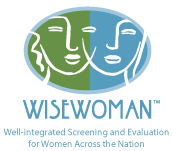CDC State Heart Disease and Stroke Prevention Programs
CDC supports several public health efforts that address heart disease and stroke.
| Program Name |
Key Facts |
 |
- Since 1998, CDC has funded state health departments' efforts to reduce the number of people with heart disease or stroke.
- Health departments in 41 states and the District of Columbia currently receive funding.
- The program stresses policy and education to promote heart-healthy and stroke-free living and working conditions.
|

|
- CDC funds stroke registries in six states (Georgia, Massachusetts, Michigan, Minnesota, Ohio, and North Carolina) to monitor, promote, and improve the quality of acute stroke care.
- The registries’ data help hospitals close the gap between stroke care guidelines and practice.
- The long-term goal is to ensure that all Americans receive the highest quality stroke care available to reduce untimely deaths, prevent disability, and avoid recurrent strokes.
|
 |
- WISEWOMAN helps women with little or no health insurance reduce their risk for heart disease, stroke, and other chronic diseases.
- The program assists women age 40 to 64 in improving their diet, physical activity, and other behaviors. WISEWOMAN also provides cholesterol tests and other screening.
- The CDC funds 21 WISEWOMAN projects in 19 states and two tribal organizations.
|
 |
- CARES program seeks to save more lives from out-of-hospital cardiac arrest.
- CARES strengthens collaboration between 9-1-1 centers, first responders, EMS agencies, and hospitals.
- CARES provides a simple, confidential, HIPPA-compliant process to assess patient outcomes.
|
 |
- In 2010, CDC launched the Sodium Reduction in Communities Program (SRCP) to help create healthier food environments and reduce sodium intake.
- Five sites received funding, including California (working with Shasta County), Los Angeles County, New York State ( working with Broome and Schenectady counties), Kansas (working with Shawnee County), and New York City.
- SRCP goals are to help create environments that support reducing sodium intake in communities and to expand public health efforts to implement sodium-related policies, surveillance, and evaluation.
|






